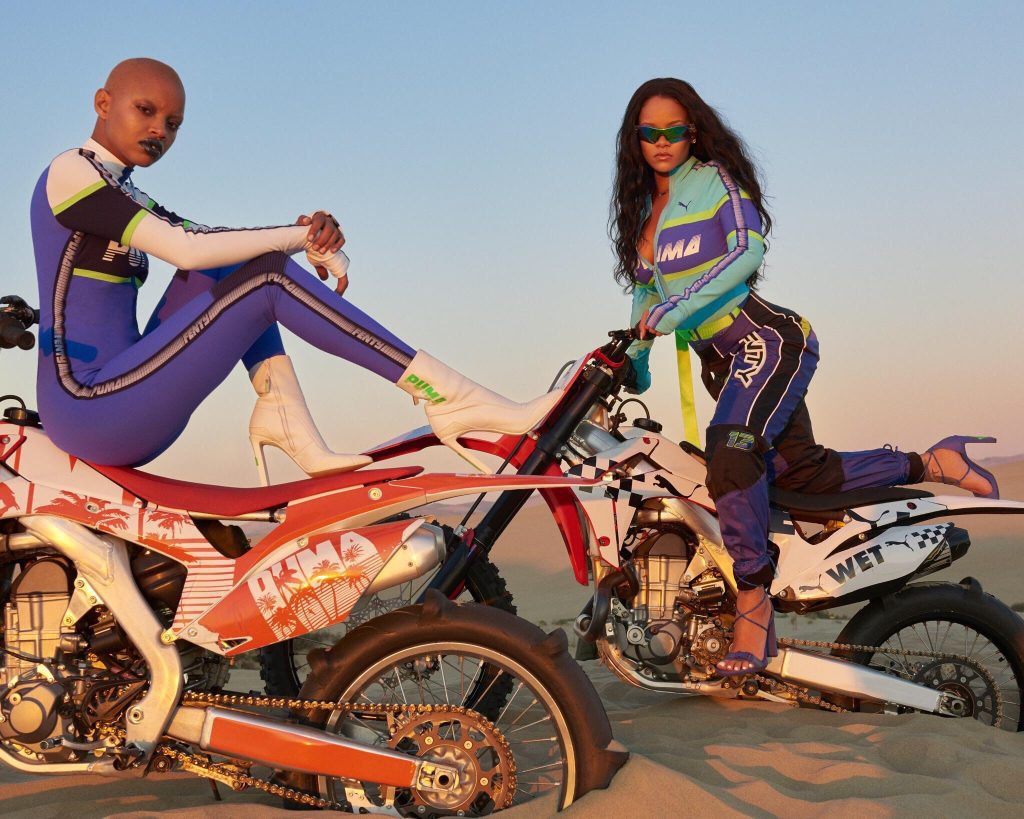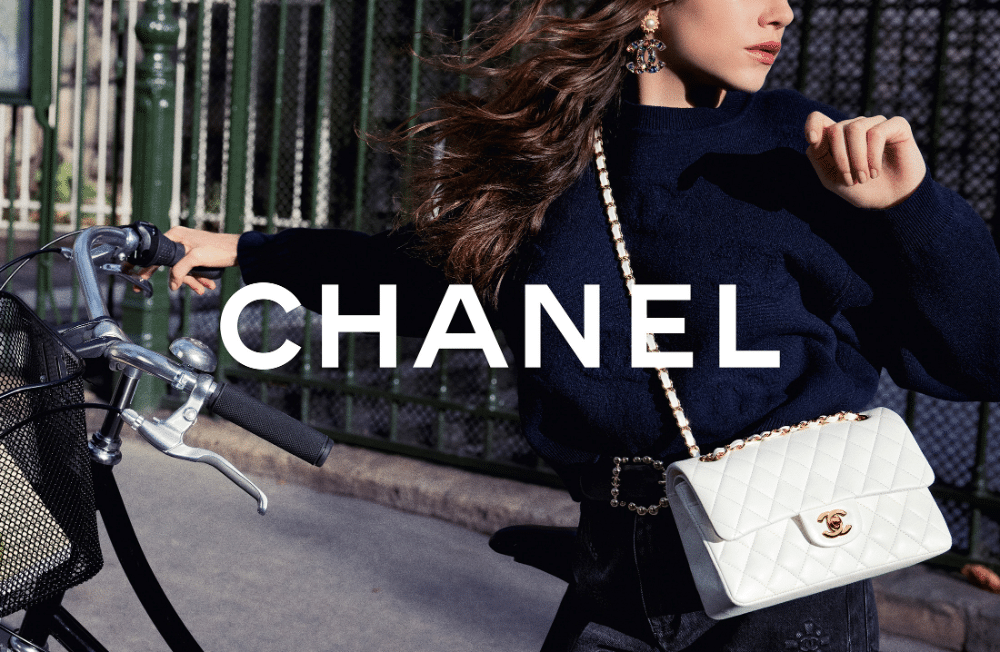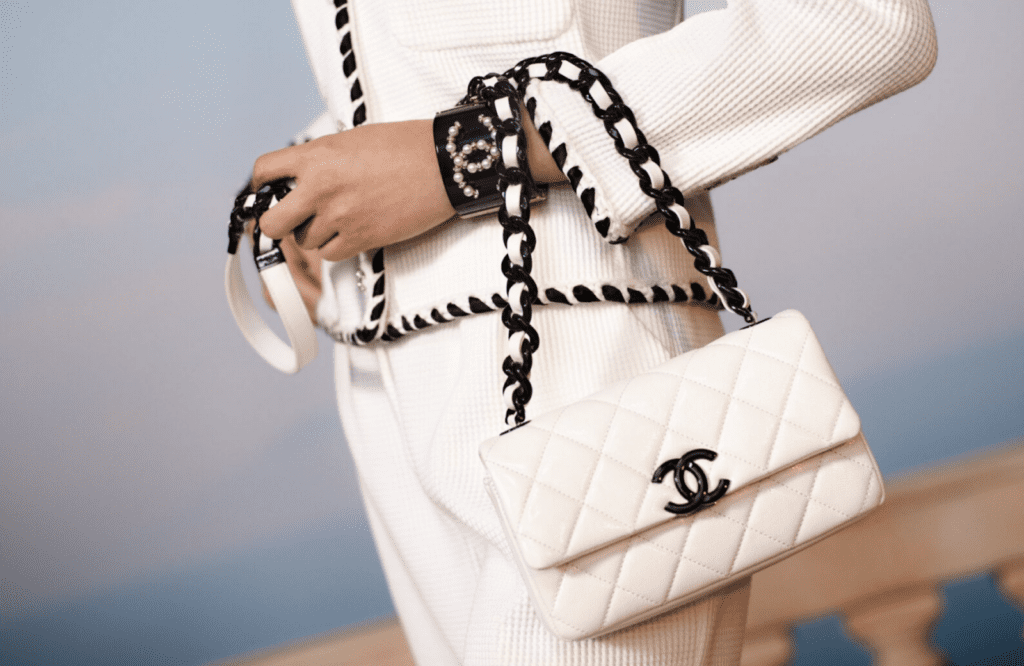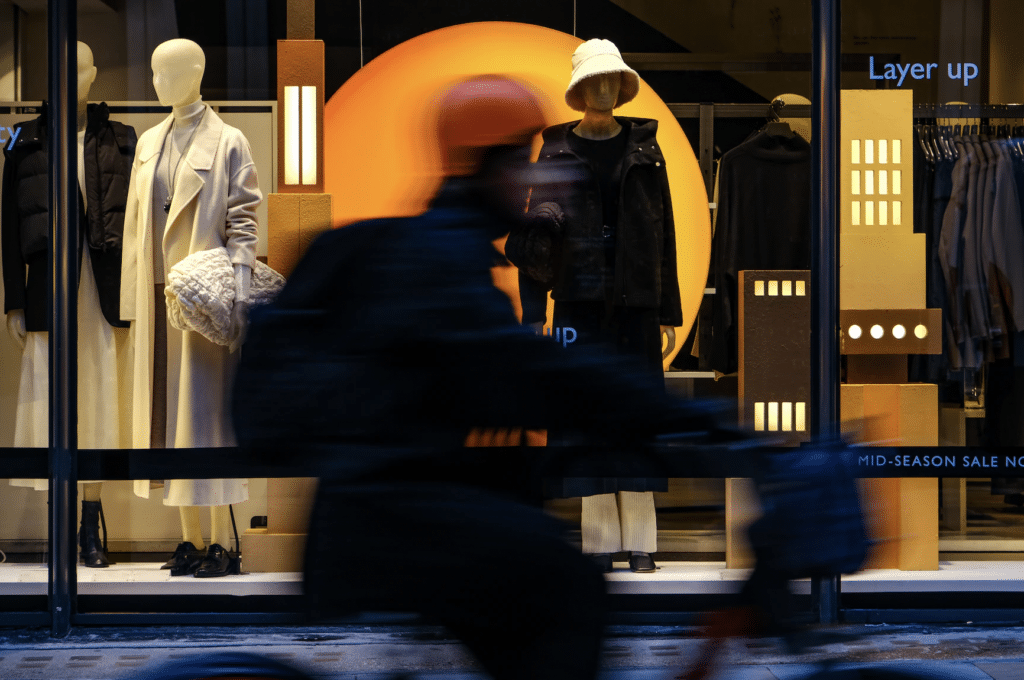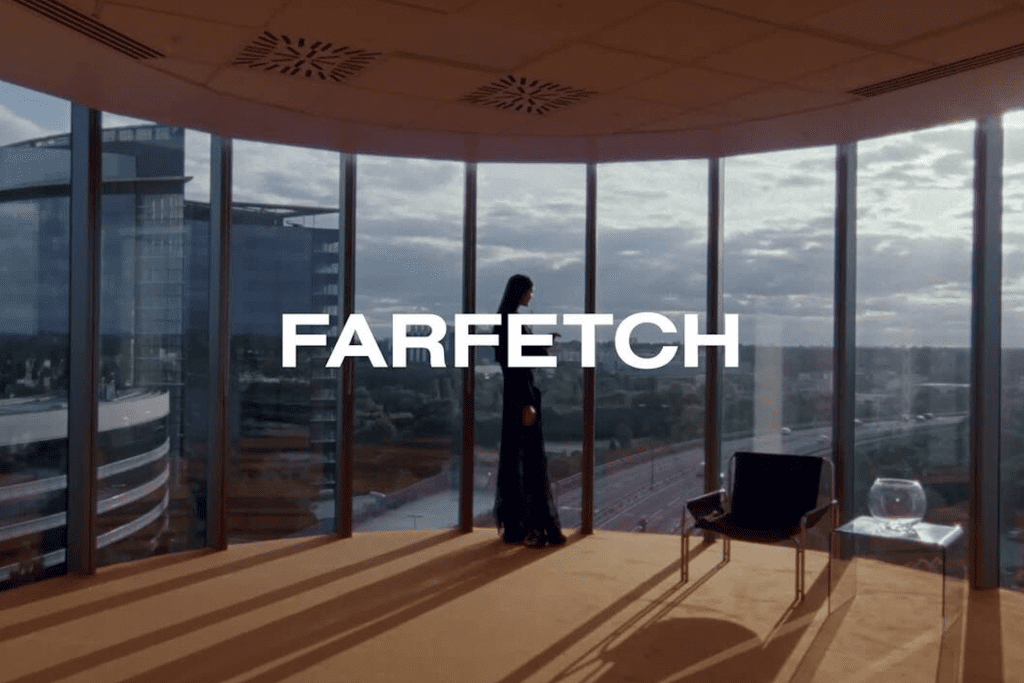Rihanna took to the runway to stage her NYFW debut for Puma in February 2016. The singer, who was named creative director/brand ambassador for the Kering-owned footwear brand in late 2014, had only released a single style of sneaker with the brand, a wildly-hot-selling platform creeper, based on an existing Puma shoe, prior to her Fall/Winter 2016 show, meaning that the collection marked the first real roll out of her work.
Rihanna’s collection, itself, was undeniably inspired by the music superstar, from the nipple-freeing mesh dresses and lacing-detailed bodysuits to the more straight forward street/athletic-inspired wares, such as sweatshirts and boxer-type shorts. It was heavy on Japanese-inspired streetwear in almost exclusively black and white hues, with what she described as “a Gothic undertone.” For the collection, which is styled by Rihanna and Tom Van Dorpe, Puma enlisted the help of Melissa Battifarano (below, right), a Fashion Institute of Technology grad and an alum of Sean Jean, Polo, Fila, Tommy Hilfiger, and most recently, Tory Burch, where she served as the Senior Designer for Tory Sport.
According to Battifarano’s LinkedIn account, she joined “Fenty Corp.” as the design director in March 2015. In actuality, Battifarano, who is a Puma veteran, “was lured back to the company to help Rihanna realize her vision.”
As for what her job entails, she is the one who designs the Fenty x Puma collections. She is happy to remain behind the scenes (and in a fourth row seat at the debut Fenty x Puma show), though. Speaking of the collection, she recently said: “It’s [Rihanna’s] collection, so it’s all about her. She always gives the right input. It’s clothing that I’ve designed for her, but it’s really her vision. But it’s been a very collaborative process. I’ve worked with her for the past year on this, so I really know what pieces are important to her so we can style them out.”
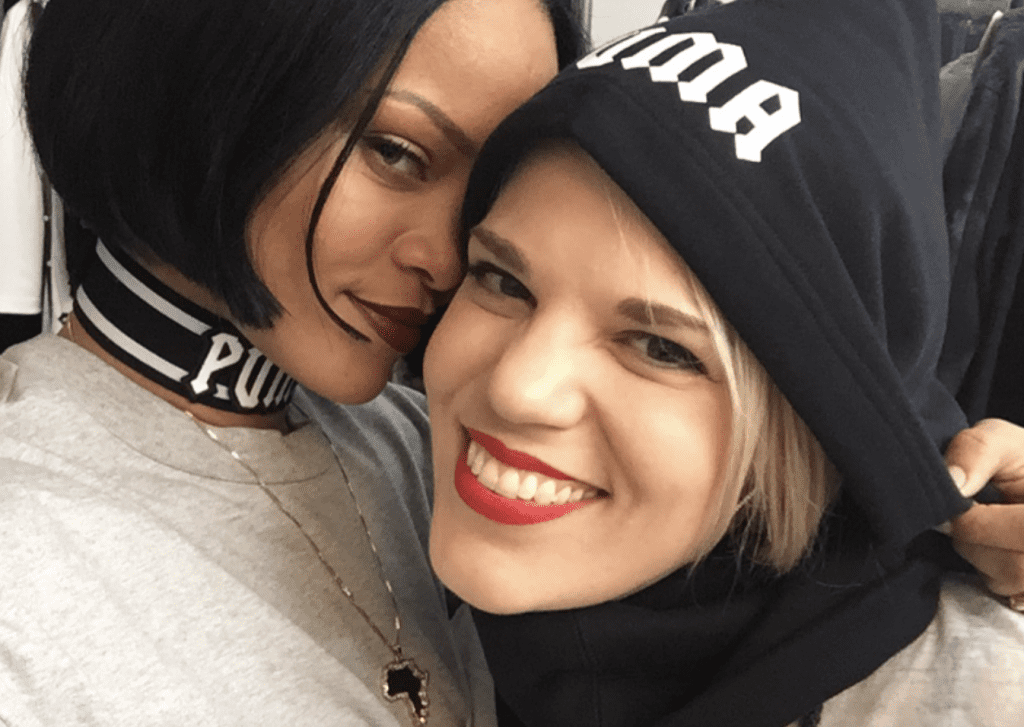
As for the design process, Battifarano said: “Ri has a really busy schedule, as you can imagine. Initially, I designed a few collections that were more sportswear-inspired, meaning things that you could wear to the gym. She said, ‘This is not me. I want something more luxurious. I want more fabrics.’ I threw those collections out the window. We upped the fabric content and looked to Italy and Japan. We found really beautiful fur in Italy, so that’s how the whole range of fur in the collection happened. We have really beautiful bonded velvet, grey heather jersey, and the fur really held those full shapes.”
Why This Collection Works
Celebrity clothing lines are almost invariably a tough sell in fashion. Regardless of where you stand on the collection itself, it is worth noting that Rihanna managed to sidestep a lot of the naysaying that comes hand-in-hand with such collections; maybe she has learned a thing or two about what not to do from self-proclaimed design genius Kanye West. For instance, instead of building up her collection as one for the Fashion history books, the singer showed looks that resonated with her as well-known style icon.
In a pre-show interview, Rihanna spoke about her newfound job moonlighting as creative director for Puma, telling the Associated Press: “I think design is a part of being creative. I enjoy creating and expressing the crazy things going on in my mind through something that people can see and that is tangible. That is the best part, being able to express yourself. Fashion to me was just one of those things that came naturally. I enjoy discovering it — all the different styles, finishes, fabrics, silhouettes. It’s not easy, but it doesn’t feel like work.”
Finally, Rihanna actually made it about the clothes – something that is increasingly hard to come by these days. She refrained from staging a massive, over-the-top presentation complete with gimmicks to distract from the clothes, themselves, and instead, put herself out there. That, in my opinion, is cool. But I suppose we should not expect anything less from Rihanna.







